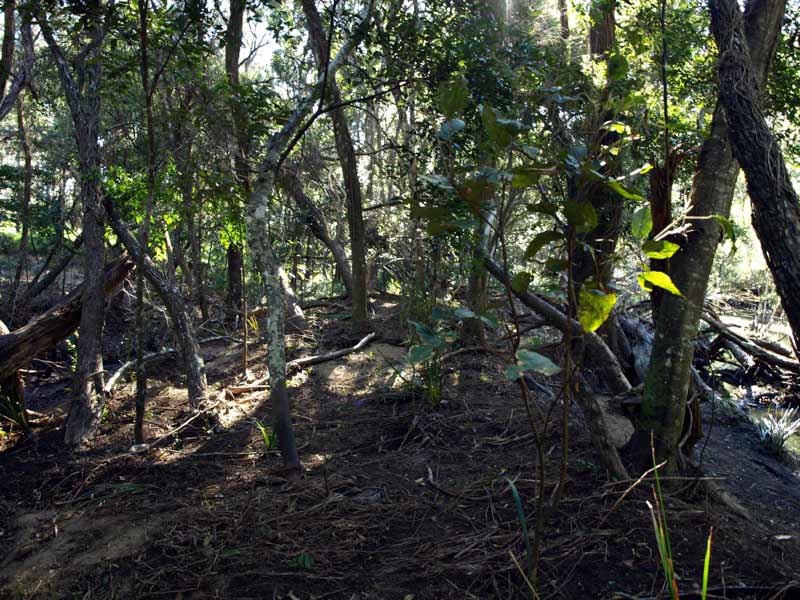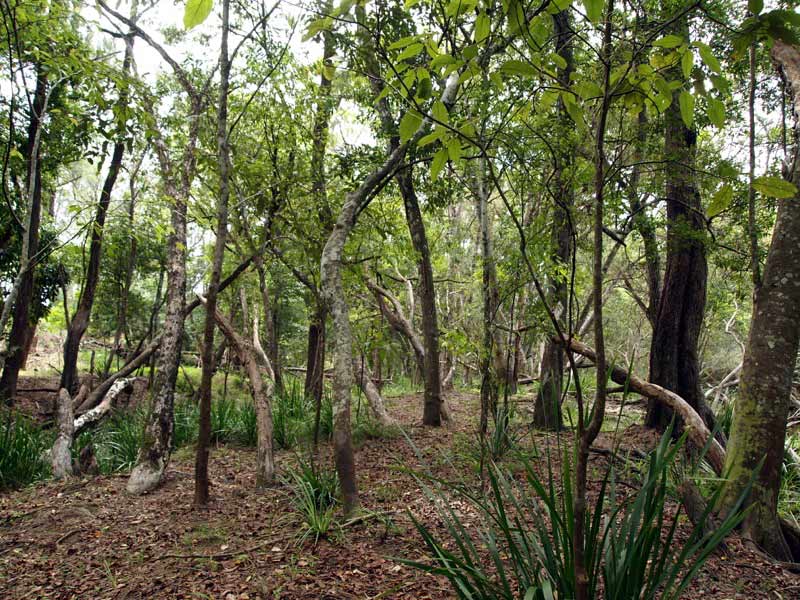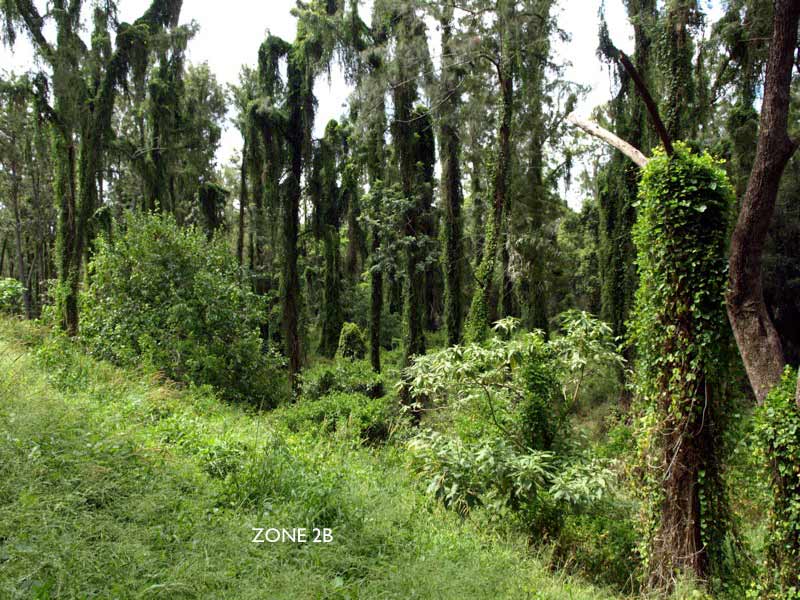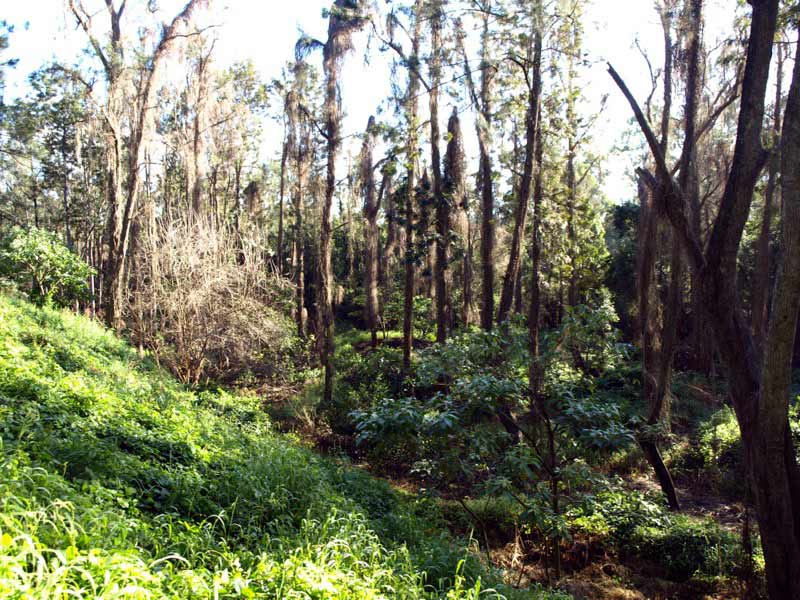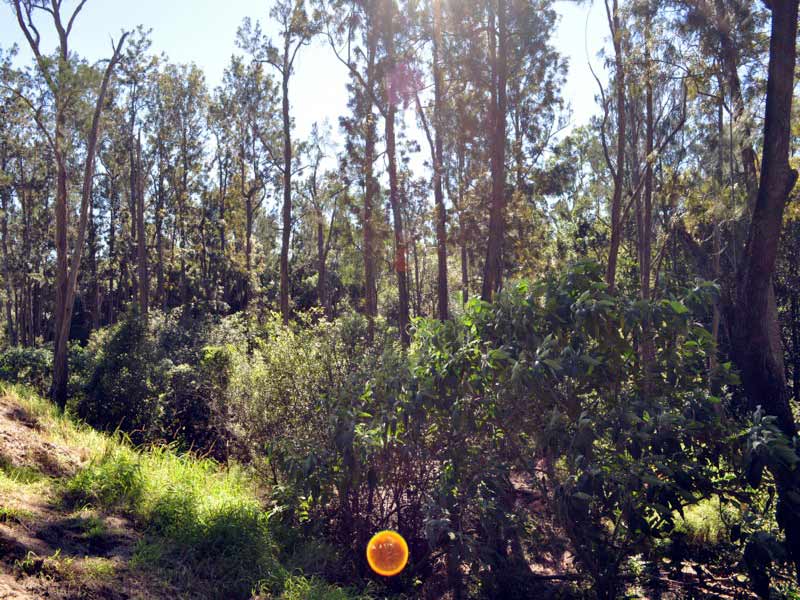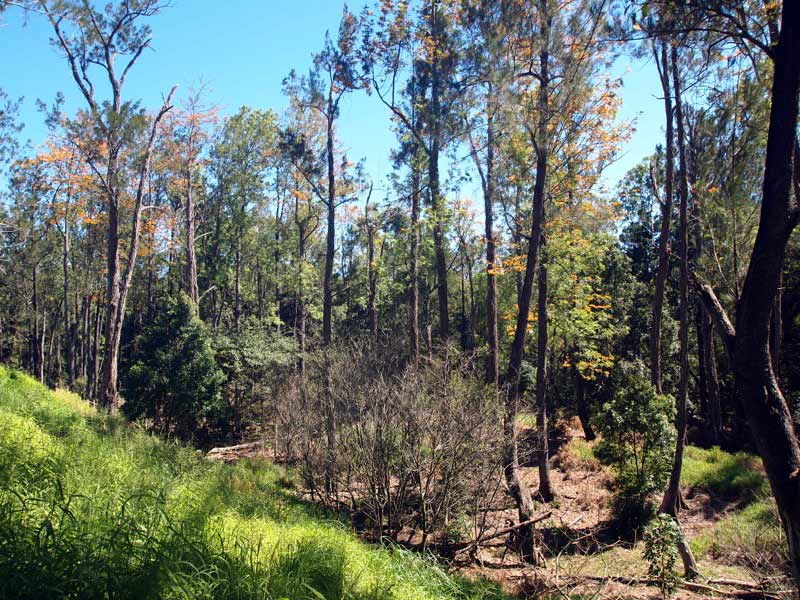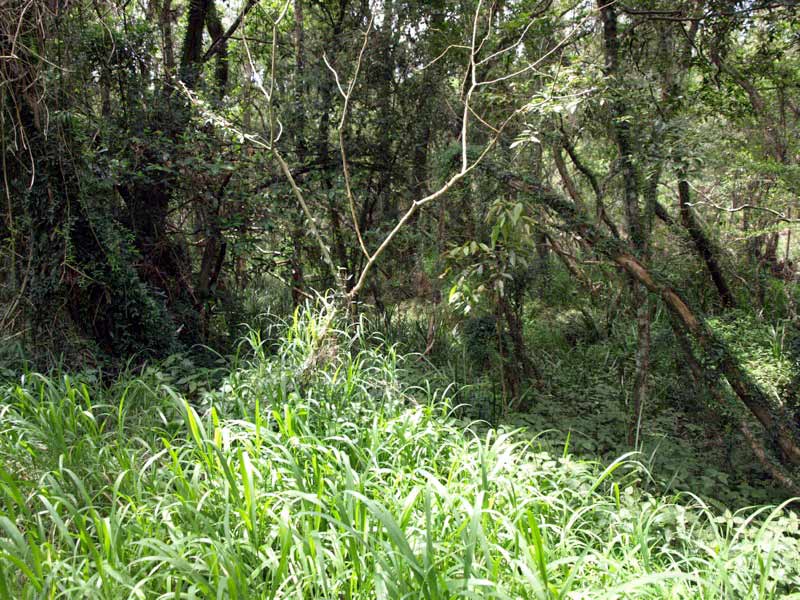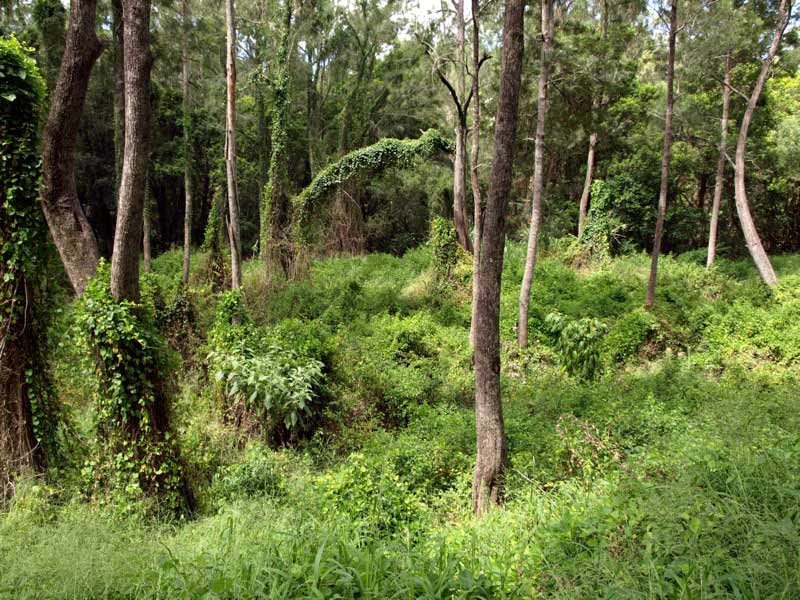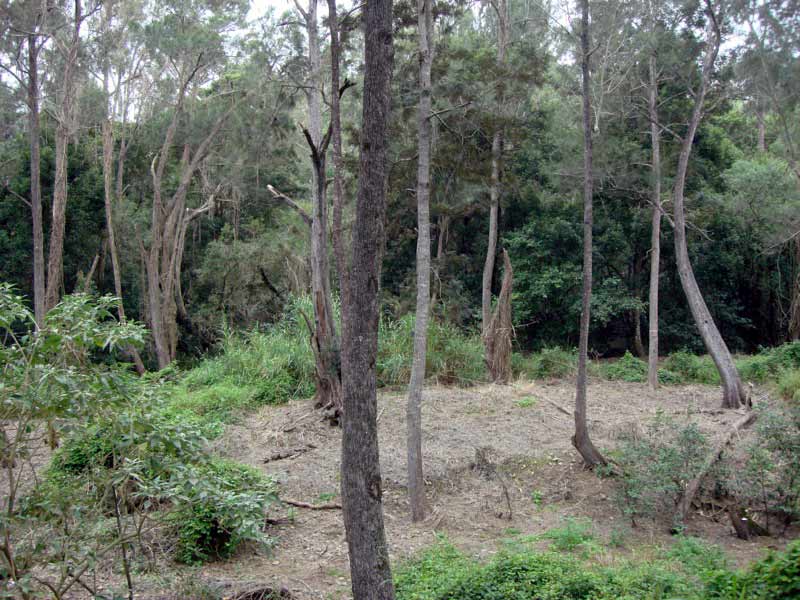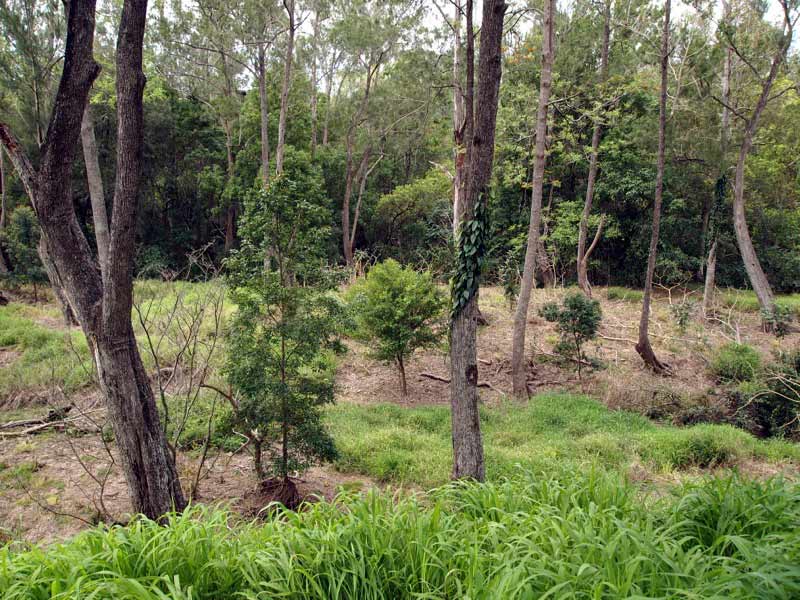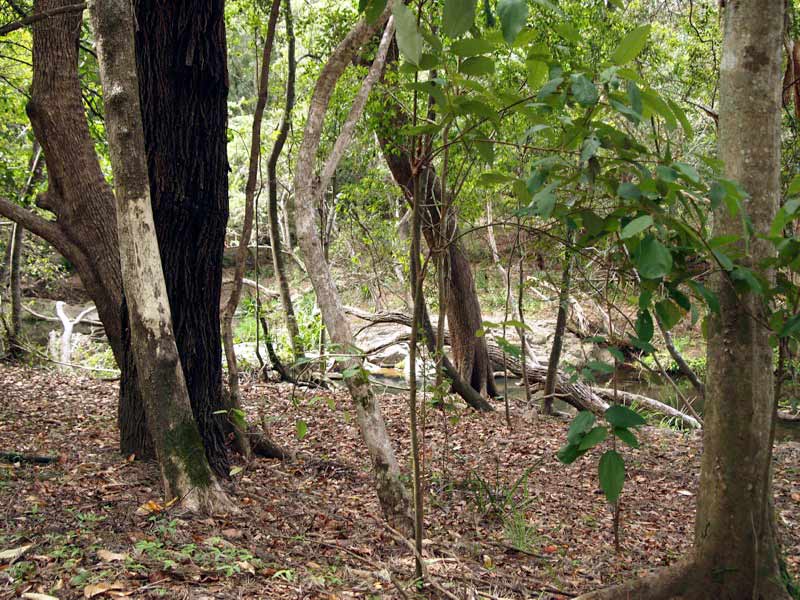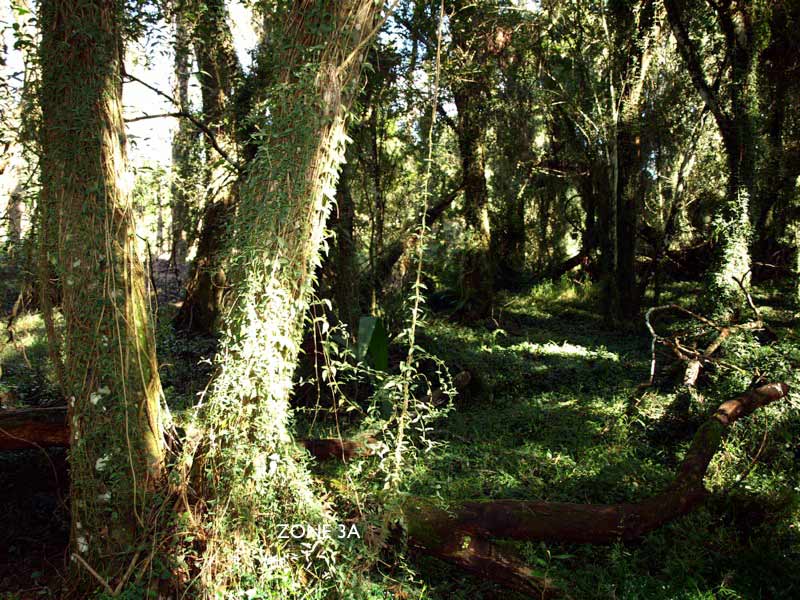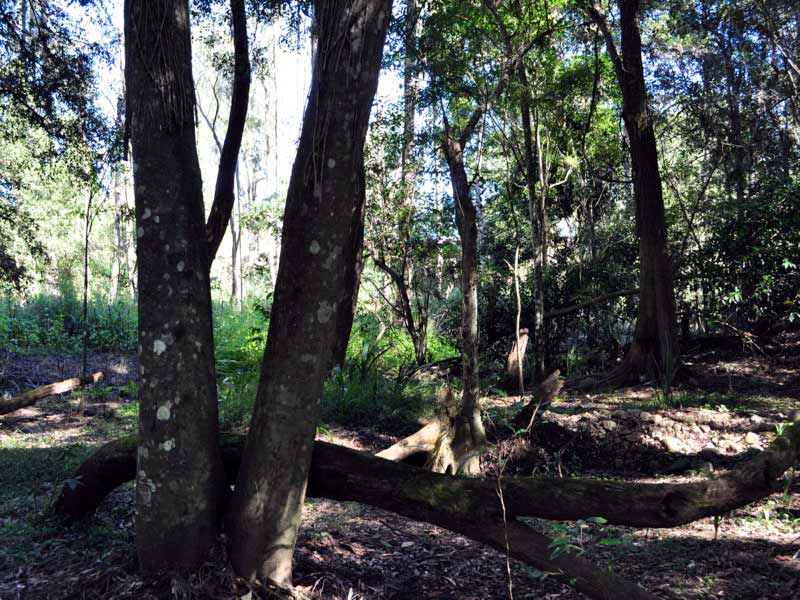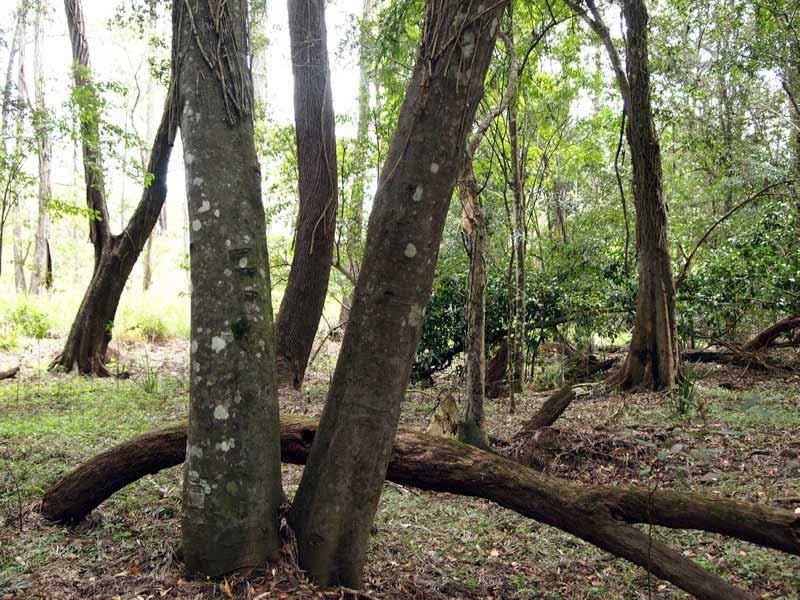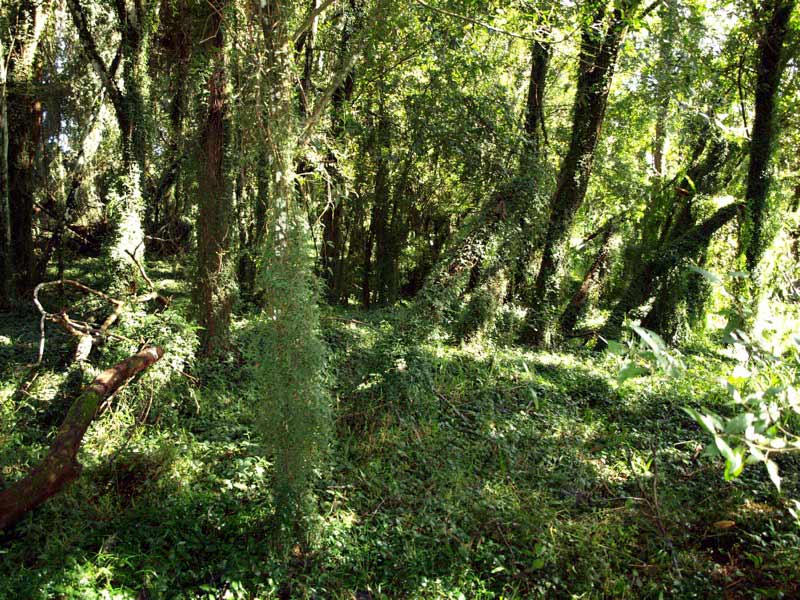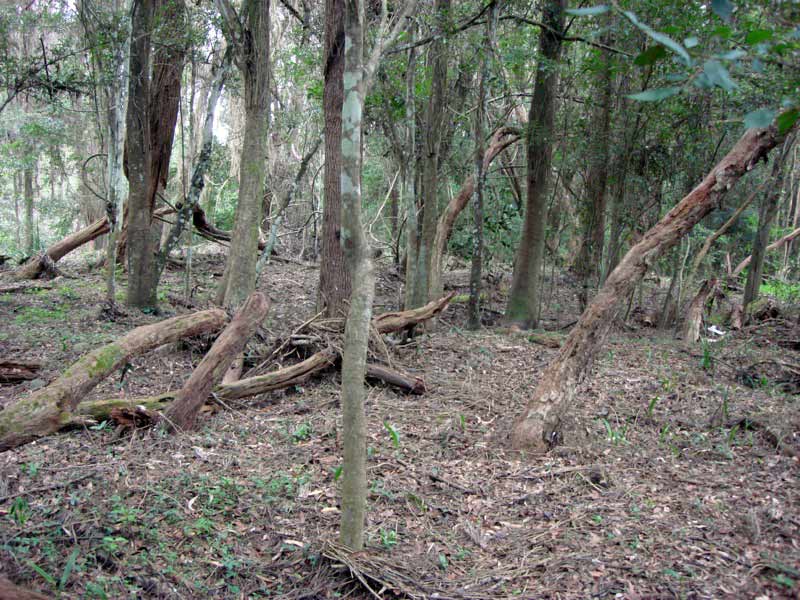Hurst Family Park is a riparian zone 3.9km long with vegetation occurring on both sides of the creek and is approx. 17.2ha in size. Native vegetation is made up of five Regional Ecosystems including 12.3.1, endangered vine forest on alluvial plains; 12.3.7 (Eucalyptus tereticornis, Melaleuca viminalis and Casuarina cunninghamiana) along water courses and 12.3.11, which we listed as an ‘of concern’ tall woodland to tall open forest.
Zone 1
Zone 2b
Zone 3
Zone 4
Zone 5
Zone 6
Zone 7
THE PROBLEM
Cat’s claw creeper (Macfadyena unguis-cati) present at all layers of the forest with heavy vines starting to collapse mature river oak and vines severely impacting on many native plants in the mid and lower storeys. The thick carpets on the ground smothered populations of plants, altering habitat and preventing native plant regeneration. Numerous other weeds occurred at the site including madeira vine, Dutchman’s pipe, camphor laurel, devil’s fig, tobacco bush, Singapore daisy, trad and exotic grasses such as setaria. Cat’s claw posed the biggest threat of all the weeds present.
ACTIONS
Some primary works had been done by the Nerang River Keepers, the local community group, but it was decided they move sites to ensure their viability as psychological advances in the initial years are difficult on such a weed infested site.The group however assisted the restoration process by controlling some of the more mature cat’s claw vines, freeing up the canopy and planting trees at the entrance of the park to assist with gaining more community support for the river.
Preparation of a restoration plan for the lower fresh water reaches of the Nerang River prior to an aerial survey for cat’s claw creeper and madeira vine. Some zones were ear-marked for particular works identified by the community group but mostly workzones were designed to impact on the cat’s claw and clumps of madeira vine while maximising the regeneration capacity of the site.
Works commenced in the upper reaches of the site and concentrated on the control of mature cats claw vines i.e. those impacting the canopy and mid-stratum. Where vines were climbing up trees into the canopy, they were cut at waist height, peeled off the tree and treated lowto the ground using the CSP technique.The vine above the top cut is left to die over time.
Cat’s claw was also cut off from existing native plants in the mid-storey at head height and then low to the ground using CSP to allow for easier maintenance and good visibility. It also reduced the ladder affect while maximising the regenerative capacity of each clump of vegetation i.e. birds and flying foxes are using these clumps for roosting and for food and at the same time deposit seed. Smaller vines were either cut off close to the ground or pulled away from smaller native plants (seedlings, ferns and some clumps of native ground cover) in preparation for spot-spraying. Areas of native vegetation and areas with forest structure are joined up over time by workers continuing to spray out exotic groundcovers and seedlings to approximately 1 m past the drip lines of plants and clumps of vegetation.
More open areas dominated by exotic grasses (mainly setaria) and less dense in cat’s claw were considered to have a sound seed bank but to date have been retained as grass. In areas of good vegetation all weeds are controlled as part of the systematic approach and in this case were threatened first.
With each maintenance run the areas of native species are expanded and where the buffer of exotic vegetation is thin, are joined up. This approach is termed as assisted regeneration.
Other considerations such as not compromising the stability of the creek bank, retaining habitat, herbicide application (rates, variety of weeds, sensitive areas and safety) and the experience of workers has also influenced the approach.
RESULTS
To date 9.5 ha are under maintenance, all mature vines have been controlled and 180 contractor team days have been worked. Of the lower reaches ofthe Nerang River approximately 80% of the area owned by council is now under maintenance. It is anticipated that all areas i.e. more than 4km of vegetation on both sides of the river will be consolidated in the next 3-5 years.


